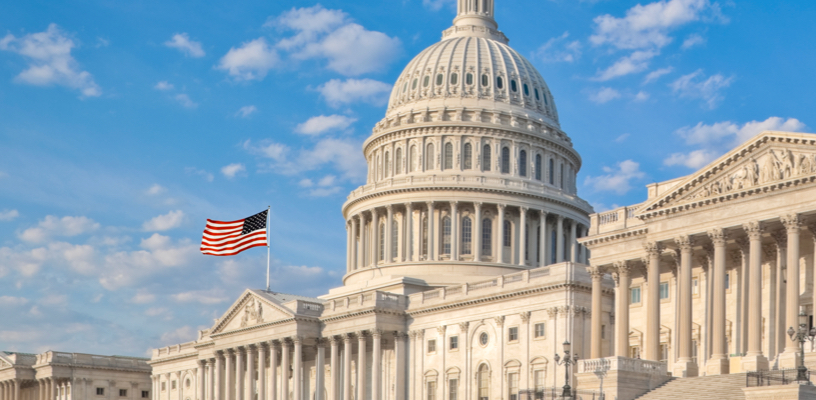The Setting Every Community Up for Retirement Enhancement Act is now law. On December 23, 2022, Congress passed the SECURE 2.0 Act of 2022 as part of the Consolidated Appropriations Act, 2023. The new legislation makes some significant alterations to the retirement account rules, including 401(k), 403(b), IRA, and Roth accounts. Some of the provisions are effective immediately, while others won’t go into effect until 2024 or even up to a decade later. Be sure to ask your Kowal Investment Group Advisor about how these changes impact you and your retirement plan, along with important dates to remember as the new legislation becomes effective.
Here are some of the key impacts:
- RMD Age Increase: As of January 1, 2023, the new age for required minimum distributions has increased to 73. This will increase to age 75, but not until January 1, 2033. If you fall under the old RMD 70 ½ OR 72 age rules, you must continue to follow that existing RMD schedule.
- QCDs Expanded: A one-time only, $50,000 QCD to a charitable gift annuity, charitable remainder unitrust, or a charitable remainder annuity trust will now be allowed as of January 1, 2023. Additionally, the QCD limit of $100,000 will be indexed for inflation starting in 2024.
- Roth Changes: Roth accounts in the workplace have been subject to RMDs during the owner’s lifetime. Beginning in 2024, this will no longer be the case as Roth assets in a plan will be exempt from lifetime RMDs.
- 529 Plans: Effective in 2024, beneficiaries of 529 college savings accounts are permitted to roll over up to $35,000 to their Roth IRA. This is over the course of their lifetime from a 529 account in their name. These rollovers are subject to Roth IRA annual contribution limits, and the 529 account must have been open for more than 15 years. If a 529 beneficiary has found an alternative way to pay for education, this new rule will allow any “leftover” funds in the plan to avoid tax or penalty if rolled over.
- 10% Penalty Exceptions: Several new 10% penalty exceptions have been added, all of which have different effective dates. These include distributions for terminal illness (effective immediately), federally declared natural disasters -$22,000 limit (effective retroactively to 1/26/21), pension-linked emergency savings accounts – $2,500 limit (2024), domestic abuse – $10,000 limit (2024), financial emergencies – $1,000 limit (2024), and long-term care – $2,500 limit (effective three years from the date the new law is signed).
- Missed RMD Penalty Reduction: The penalty for failure to take an RMD is reduced from 50% to 25%, effective January 1, 2023. Additionally, if the missed RMD is corrected in a timely manner, the penalty is further reduced to 10%.
- Catch-up limits: Effective in 2023, annual catch-up limits have increases to retirement plans and IRAs for those over 50. The deferral limit for 401(k) and other employer sponsored plans is$22,500. The catch-up contribution limit for workers over 50 is now $7,500. A “special” catch-up contribution limit has been added for employees 60 to 63 years of age starting in 2025. The contribution maximum is the grater of $10,000 or 150% of the “standard” catch-up contribution amount for 2024. The $10,000 amount will be adjusted for inflation each year starting in 2026.
- Rothification: SEP and SIMPLE plans can now allow Roth Contributions. Employer contributions to retirement plans are allowed to offer employees the option of having company contributions made to a Roth account. Anyone choosing this option will pay the income tax on the contribution.
- What’s NOT in this Act: There is no fix to the “at least as rapidly rule” for those beneficiaries subject to RMDs for years 1-9 under the 10-year rule when death is on or after the required beginning date. Congress could have corrected that here, but it chose not to. So, it seems more likely the IRS will keep this complicated RMD rule in place when it issues final regulations.
While these are some of the bigger items, the SECURE 2.0 Act is loaded with numerous other provisions. The new legislation attempts to accomplish three goals: increase opportunities to save for retirement, improve retirement rules, and lower the employer cost of setting up a retirement plan. It’s important to note that everyone’s financial situation is different. To learn more about the SECURE 2.0 Act provisions and how they impact you and your retirement plan, schedule a meeting with one of our fiduciary advisors at Kowal Investment Group.
Meet with us to discuss your options!
This document is a summary only and not meant to represent all provisions within the SECURE 2.0 Act.
This material is being provided for information purposes only and is not a complete description, nor is it a recommendation. The information has been obtained from sources considered to be reliable, but we do not guarantee that the foregoing material is accurate or complete. Please note, changes in tax laws may occur at any time and could have a substantial impact upon each person’s situation. While we are familiar with the tax provisions of the issues presented herein, as Financial Advisors of Kowal Investment Group, we do not render advice on tax or legal matters. You should discuss tax or legal matters with the appropriate professional.
Kowal Investment Group, LLC (“Kowal”) is a Registered Investment Advisor. Kowal will maintain all applicable registration and licenses as required by the various states in which Kowal conducts business, as applicable. Kowal does not provide legal, accounting, or tax advice. Consult your attorney or tax professional. Representatives have a general knowledge of the Social Security tenets. For complete details on your situation, contact the Social Security Administration.
Sources:
https://www.fidelity.com/learning-center/personal-finance/secure-act-2

